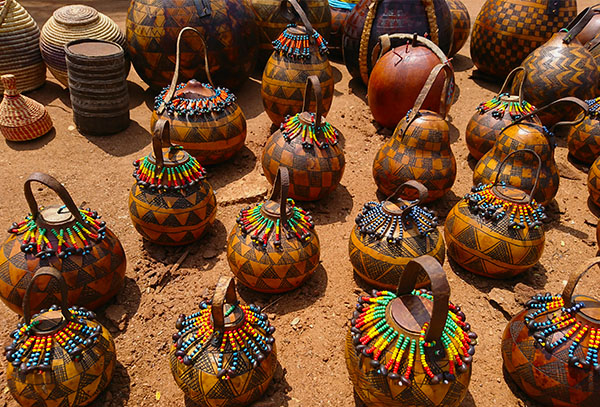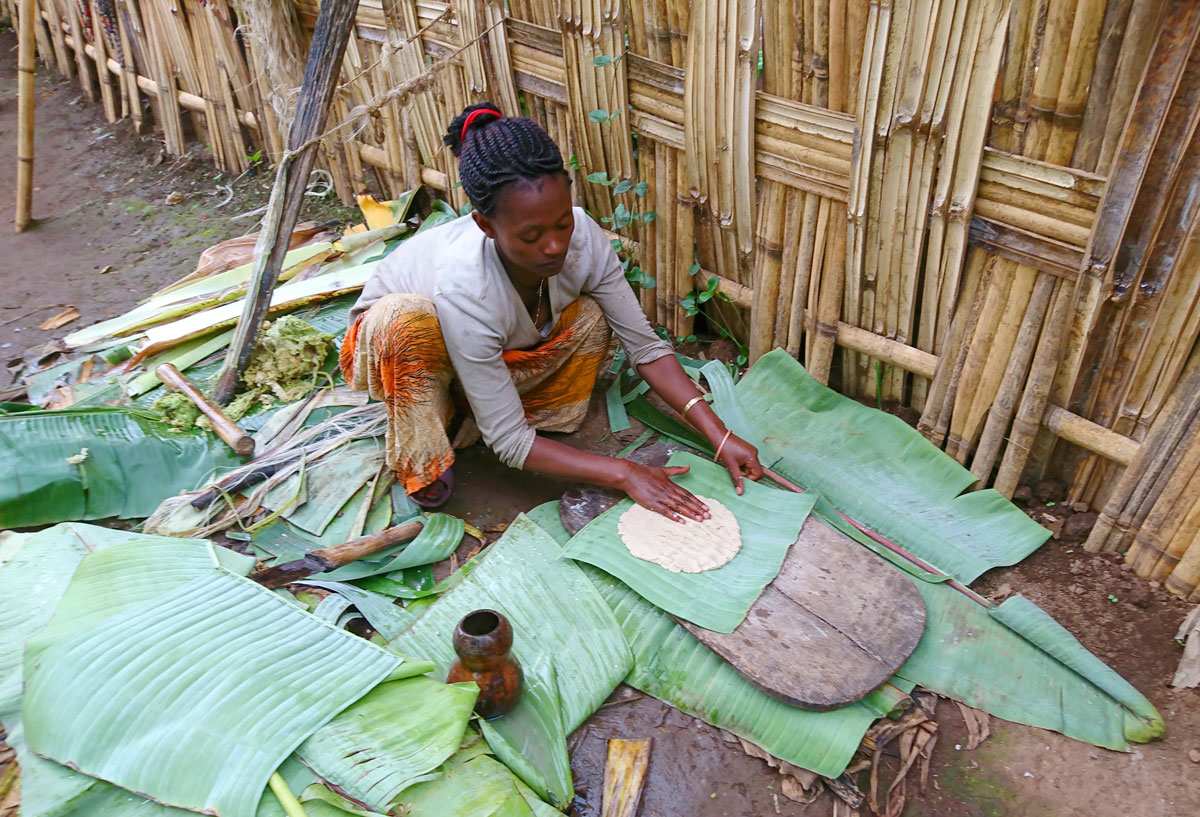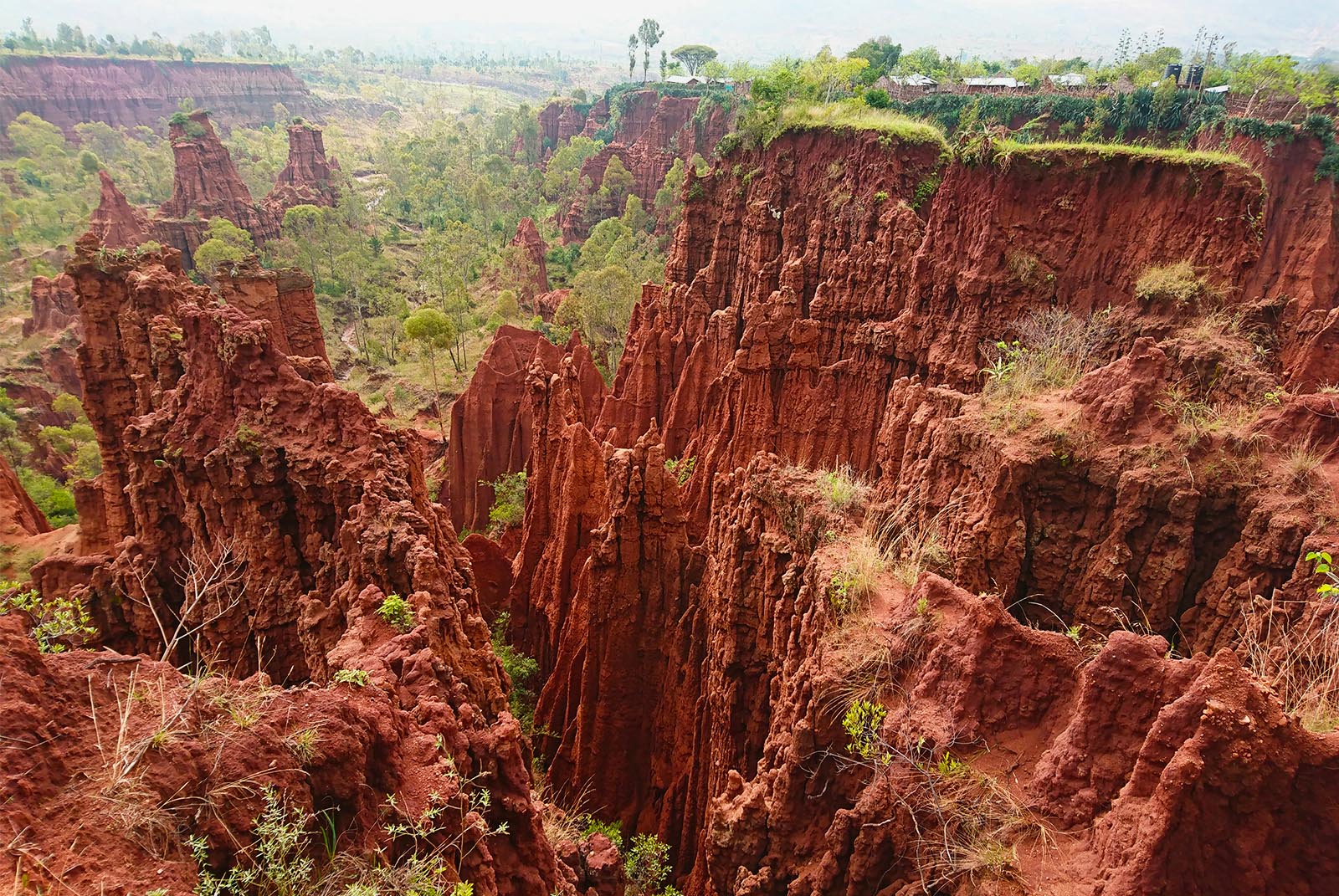Lower Omo River Valley, Ethiopia
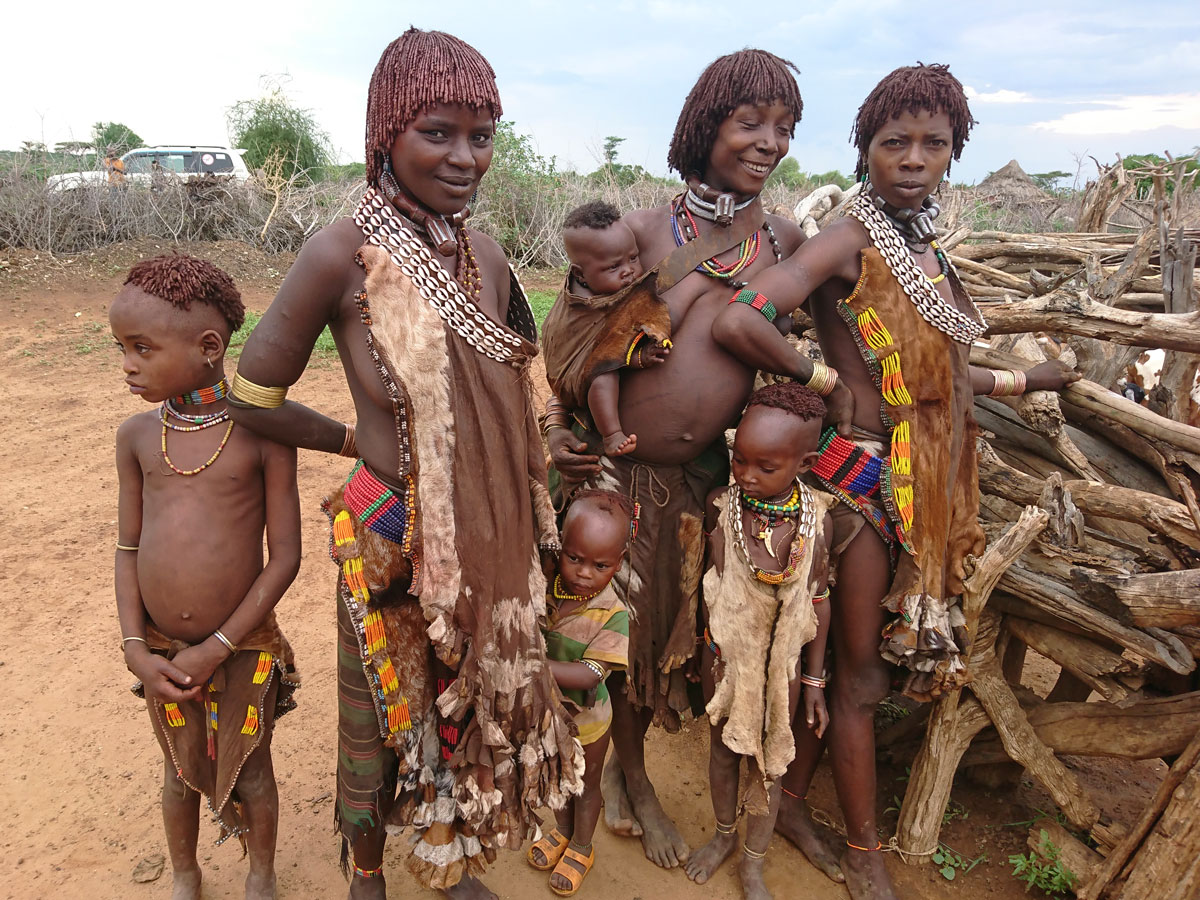
Lower Omo River Valley Tour - 7 days
Itinerary
Day 1
Fly one hour with Ethiopian Airlines from Addis Ababa to Jinka in the far south of Ethiopia to a new airport with asphalt runway on a modern Bombardier Q400 twin prop aircraft. Arrival time is about 2 pm.
Lunch in Jinka in a local restaurant.
Visit the colourful Jinka market and the Ethnographic Museum for an introduction to the history and cultures of the region.
Overnight in the recently built Nasa Hotel.
Day 2
Drive through hill country and across bushy flats through Mago National Park to visit a Mursi tribal village. This is where the women are known for their famous clay lip plates.
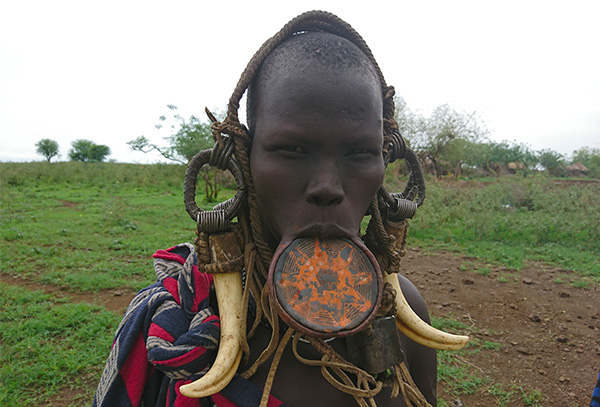
Lunch back in Jinka.
Drive to Turmi town which will be our base to visit tribes in the Lower Omo River Valley.
Overnight in Turmi at Buska Lodge.
Total driving today is 250 km. About 210 km is on mostly good gravel road and 42 km is on asphalt.
Day 3
In the morning, drive from Turmi 60 km to a Kara tribal village on the banks of the Omo River. Experience a cultural coffee ceremony and be offered a traditional coffee brewed from coffee bean husks. Be welcomed into a traditional home. Take lots of photos as per transparent financial arrangements made through our guide with the community.
Back to Turmi for lunch.
In the afternoon, visit the Hamar market and later spend time in a Hamar tribal village and meet a local family in their home.
Overnight in Turmi at Buska Lodge.
Day 4
In the morning drive 70 km from Turmi to Omorate town to visit a Dassanech tribal community. A highlight today is being paddled across the Omo River in a traditional dugout canoe and walking 2 km across the dry flats of the river flood plain to a thorn-bush walled village. Away from the tree lined river's edge, the landscape is bare like a desert. This is the dry season so there is no flood risk.
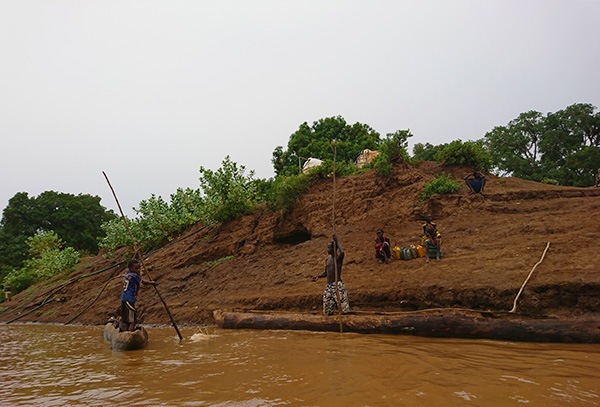
This remote spot is a wonderful place to buy authentic traditional gifts at good prices but please don’t bargain too hard. The prices here are much better than in Addis Ababa.
Back to Turmi for lunch.
In the afternoon, hope for news of a Hamar tribal Bull-Jumping male initiation ceremony. These are authentic and not staged for tourists. Our guides stay in touch with their excellent network of community contacts to hear of any events in the area. The hosts are happy as they receive our courtesy payment through our guide. Please note, this cost is reasonable at around (Ethiopian Birr) ETB 600 per person (~US$ 22). It is extra to clients because seeing this event is not a certainty, so is not included in the tour price.
Overnight in Turmi at Buska Lodge.
Day 5
In the morning, drive about 30 km to Dimeka and visit the largest market in the Hamar tribal area.
Lunch in Dimeka.
In the afternoon, drive 210 km through scenic mountains and valleys to Konso community which is a UNESCO World Heritage Site village in hill country. Konso is an old, and never colonised, African treasure.
Overnight in Konso at Kanta Lodge.
Day 6
In the morning visit Konso village and the Chief’s traditional compound. See the ancient fortifications, terraced agriculture, the carved Waka sculptures erected in memory of past chiefs and war heroes, walk on sacred ground to see Waka burial sculptures for chiefs. Visit Konso museum to gain further insights into this defended hill-top culture.
Drive 160 km on good road to reach Arba Minch town for lunch. This well watered area is a fruit bowl. The local mango smoothies are incredible. Flavoursome freshwater fish dishes ensure delicious alfresco dining. We will have lunch in the palm shaded courtyard of a hotel with a popular restaurant. Really tasty vegan and vegetarian options are always available given Ethiopia's many Christian and Muslim holy days with ancient, vegan dietary rules. Ethiopia's uncolonised, indigenous cuisine is amongst the finest in Africa. This is evidenced by Ethiopian restaurants being in many western countries including Auckland, New Zealand.
In the afternoon, drive to Dorze village to visit people of the Dorze tribe. Their traditional houses resemble giant, domed bee hives. The house on the left is much older than the other. Find out how you can tell.
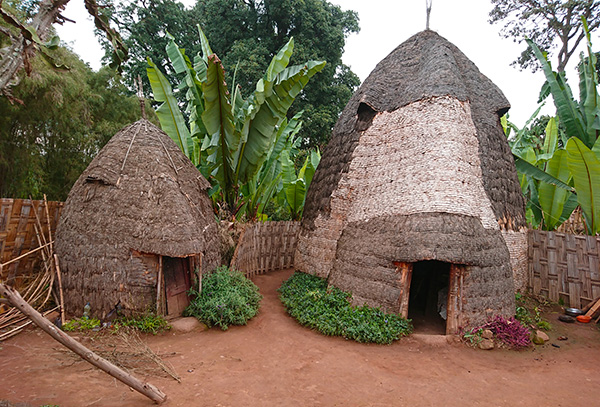
See how the false banana plant is harvested and processed and sample some local honey. Check out the distinctive designs of the colourful fabrics at the local weaving co-op.
Overnight in Arba Minch at Paradise Lodge.
Day 7
In the morning enjoy a boat ride on Lake Chamo and get up close to some very large crocodiles, hippos and water birds.
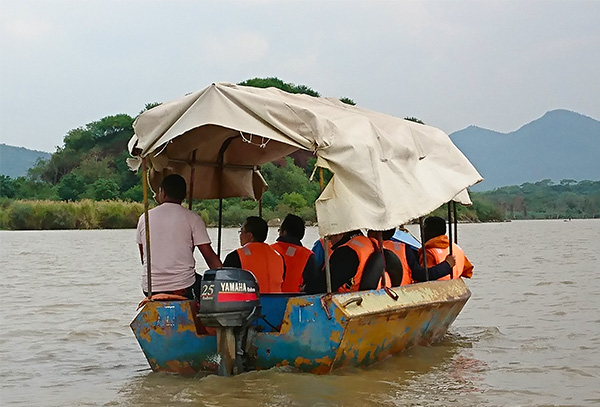
Lunch in Arba Minch.
In the afternoon, fly Ethiopian Airlines back to Addis Ababa. Arrival in Addis Ababa marks the end of this tour. We are happy to suggest accommodation to suit every budget level.
The Omo River
The Omo River runs 760 km from just south of the capital Addis Ababa. It empties into Lake Turkana which straddles the border with Kenya. It is the longest Ethiopian river outside the Nile River basin. Ethiopia’s mountains are known as The Roof of Africa because this is where the rain falls that feeds 9 major rivers carrying precious moisture to distant, parched lowlands. The most famous of these rivers is the Blue Nile known as the Abbay by Ethiopians but there are also the Wabashebelle, the Awash and Tekeze rivers amongst others.
The Omo River starts as a trickle, as all great rivers do, in the hill country south of Addis Ababa. It flows south and west through mountain valleys it has cut and delivers water and mineral rich sediment onto the Lower Omo River Valley plains. It drains into wetlands on the northern edge of Lake Turkana. Most of Lake Turkana is in Kenya.
Hippos, crocodiles, beautiful birds and monkeys inhabit the Acacia bush along the banks especially through the Omo and Mago National Parks.
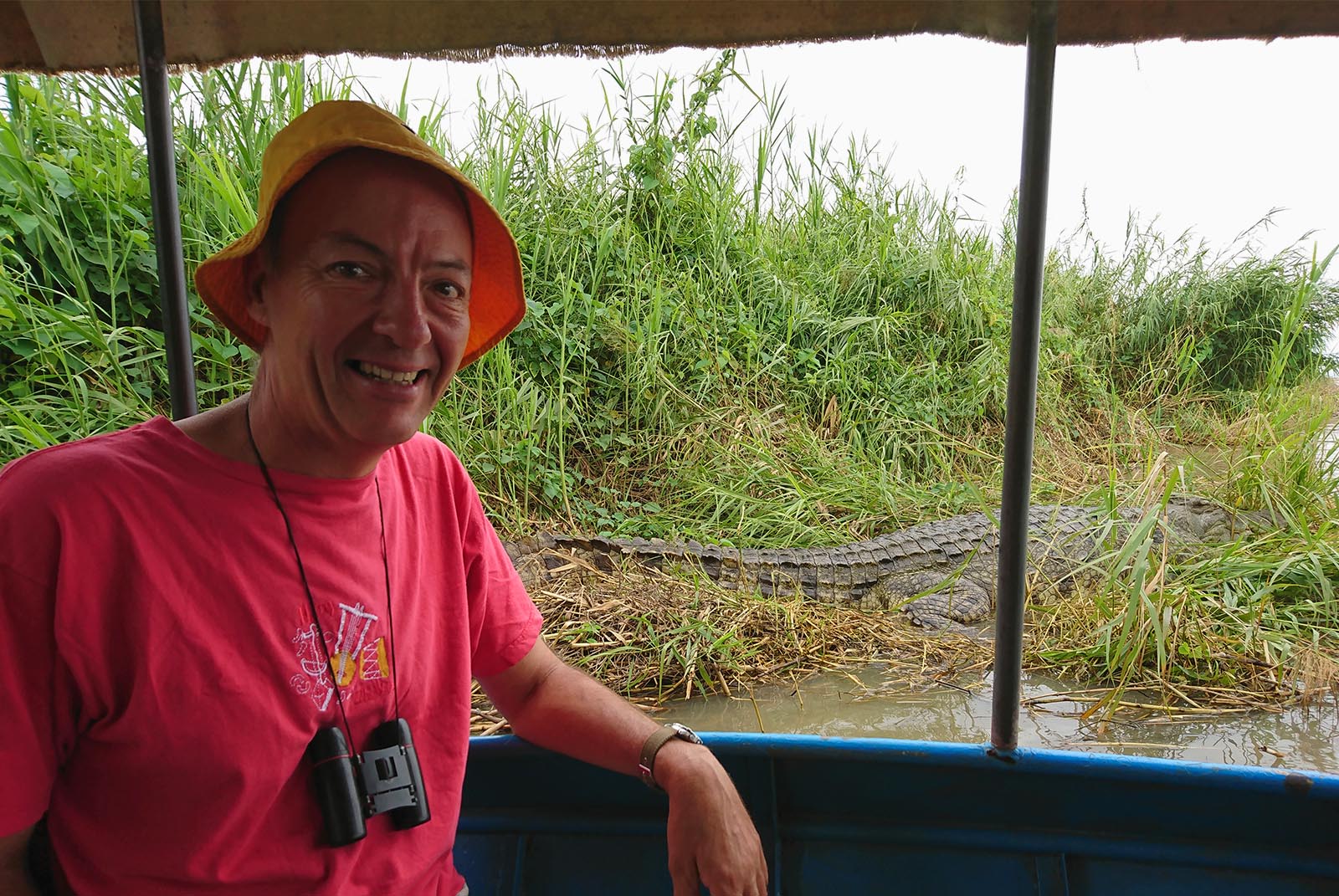
For decades, mountain sections of this river have drawn white water rafters from many countries. In 1995 I remember meeting a demobilised Ethiopian artillery officer who’d started a new career as a tour driver. He showed me the dog-eared business card of an adventurous New Zealander who had organised a private white-water rafting expedition that my new friend had driven for.
The first western archaeologists to visit this area were the French in 1901. Major discoveries were made in the late 1960s and early 1970s.
The earliest remains of people like us, anatomically modern Homo sapiens, have been found on the banks of the Lower Omo River dated at 195,000 years ago.
The first European to reach here was Italian explorer Vittorio Bottego who was guided to the Omo River by locals in 1896. At the Omo River delta on the northern shores of Lake Turkana, Bottego found flags planted months earlier by a southbound Ethiopian expedition led by Ras (Lord) Wolda Giyorgis. Unfortunately, Ras Wolda’s group, far from their northern Simien homeland, had plundered the locals.
Today, there are major concerns for the people and environment of this entire UNESCO World Heritage region. Large scale irrigation draw-off for sugar cane plantations and large farms combined with the largest hydroelectric dam in Africa generating 1,870 Megawatts (Mw) of power have seriously impacted on the river. When the Gibe III dam opened in 2016 it doubled Ethiopia’s entire electricity production. Soon the Grand Ethiopian Renaissance Dam (GERD) on the Blue Nile will generate a colossal 6,450 MW as the world’s 7th highest capacity hydro dam and Africa's largest. Ethiopia’s goal is to build a clean, green economy based on the cheapest, renewable electric power in the world and to export this electricity to neighbouring countries.
Ethiopia has landscapes of such incredible diversity that one area can be on the edge of drought while another area can collect enough rain to generate some of the world's cheapest hydroelectricity.
Three term Prime Minister of New Zealand and subsequently Head of the UN Development Program, Helen Clarke, has held up Ethiopia as an example of how to move forward sustainably in the context of climate change. This was in a speech at the University of Auckland, New Zealand.
The fate of the Lower Omo River Valley region is caught in the tension between the survival of it's indigenous people and the federal republic’s economic vision.
The southernmost town in the region is Omorate located 50 km from the Kenyan border. It is an official customs post and passports are presented. It is fairly quick and professionally handled by our guide.
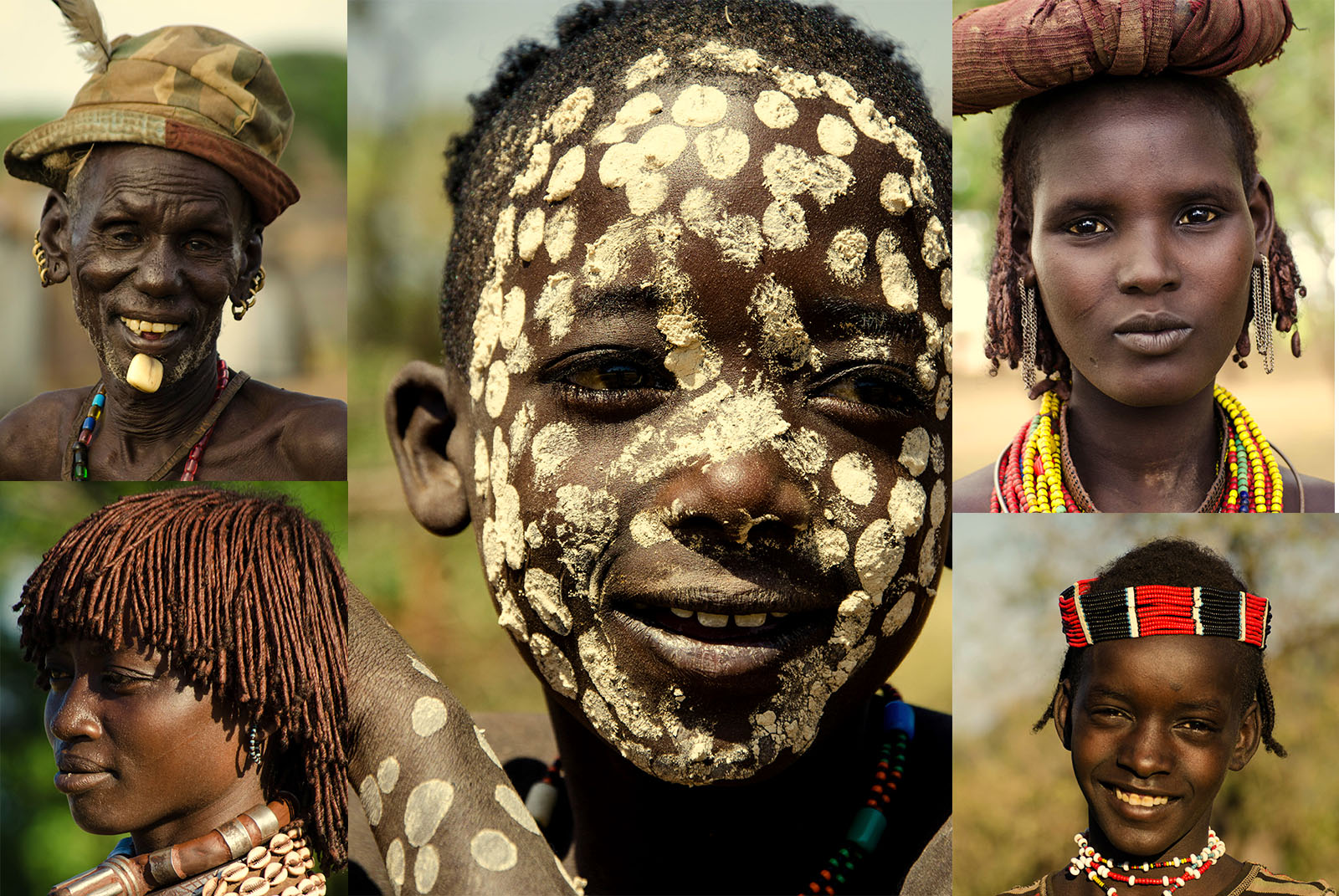
Tour Dates:
This tour runs any time with a minimum of 2 people.
- Includes 2 flights on Ethiopian Airlines Domestic.
1. Addis Ababa (Airport Code: ADD) to Jinka (BCO)
2. Arba Minch (AMH) to Addis Ababa (ADD).
Cost :
NZD 2,510
USD 1,600
AUD 2,370
GBP 1,310
EUR 1,440
Per person, sharing a twin or double room.
SINGLE SUPPLEMENT COST
If a single bedroom is required, there is an additional Single Supplement cost of US$140.
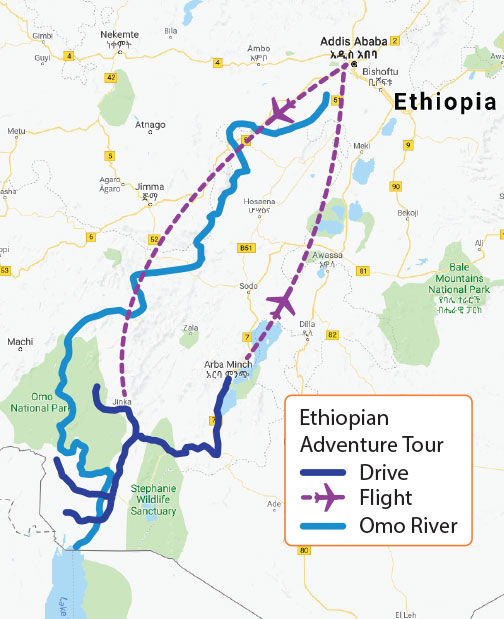
Domestic Flight Discount
If you arrive in Ethiopia on Ethiopian Airlines International your domestic air tickets can be discounted by up to 40 - 50%.
This discount can be passed on to clients who provide a passport scan and inbound Ethiopian Airlines International ticket details.
Start your Ethiopian Adventure Tour
Please complete the form below.
Sam will communicate with you directly to book and help answer any questions about your Ethiopian Adventure Tour.
Why is Ethiopia The Cradle of Humanity? – It's Where we all have cousins.
We may all be united by this globally unique place. Anyone who is fascinated by unfamiliar cultures, history and scenic beauty will love the southwestern Ethiopian region known as the Lower Omo River Valley. It’s been a UNESCO World Heritage site for nearly 40 years.
The ‘Out of Africa’ model is the most widely accepted theory regarding when humans like us, Homo sapiens, first successfully moved out of Africa and populated Asia, Europe and the western Pacific including Oceania.
According to DNA and fossil evidence, earlier attempts around 2-300,000 and 115 – 130,000 years ago had largely failed. Then about 60-70,000 years ago, when sea levels were lower than now, there was another major migration. Our ancestors crossed what is now the seabed of the Red Sea at the Straits of Bab Al Mandeb. We can all be grateful that they took that opportunity. This is now the narrow strait between southwestern Yemen and Djibouti on the northeast coast of the African continent. Now, Bab Al Mandeb means Gate of Tears due to its turbulent waters.
The Out of Africa theory says that we Homo sapiens are all descended from the people who left Africa about this time.
It is thought that only about 150 to 1,000 people migrated out of a continental population of 2 – 5,000 individuals. Within a few millennia, their descendants reached Arabia, Persia and India. From India they reached Oceania about 60,000+ years ago. The migration into Europe and north Asia was about 50,000 years ago. Migrations across to the Americas were about 20 - 50,000 years ago.
Thank you Wikipedia to whom we donate.
The people of the Lower Omo Valley have a leading role in this story.
For tens and hundreds of thousands of years, humans have moved through and beyond this region in many directions.
The earliest anatomically modern human remains have been found along the banks of the Lower Omo River and dated at 195,000 years old although scholars believe that modern humans date from more like 300,000 years ago. The DNA and fossil evidence are still being discovered.
DNA evidence shows that all living humans are descended from an individual woman from the Lower Omo River Valley. She is the matriarch whose descendants successfully migrated out of Africa. All current African ethnic groups are believed to descend from her kin who migrated into the heartland of Africa.
This is why Ethiopia is known as The Cradle of Humanity.
We all have very distant cousins amongst the people of the Lower Omo River Valley.
There is more language and genetic diversity amongst the tribes of the Lower Omo River Valley than anywhere on earth among peoples whose lifestyle, in harmony with nature, is little changed from antiquity and in such a concentrated area. Up to 45 languages are spoken in this region representing three of Africa’s four language groups.
Fifteen tribal groups live on the banks and in the hills along the lower reaches of the Omo River. Until recent decades, the region was considered too isolated for exploitation. Today, hydroelectric dams and the large-scale irrigation of sugar and cotton plantations threaten the survival of these ancient peoples.
The terrain of the Lower Omo River Valley is mainly bushy savannah flats and hills bordered to the north and east by mountain ranges. The annual, sediment-rich floods and year-round flow of the Omo River sustain the people of this iconic human mosaic.
Tribal populations range from 1,500 Karo to 250,000 Konso people. Many have their own languages and cultures that set them apart from their neighbours. These differences are frequently seen in individuals through their colourful accessories, body painting and tattoo designs, tribal scarification marks and hair styles.
The tribes have different lifestyles including fishing the Omo River, maintaining herds of cattle and raising crops using the flood retreat technique. Some are nomadic within their territory and some are less so.
Religiously, the Lower Omo Valley tribes are Christian, Muslim or Animist.
TRIBES WE WILL VISIT
The tribes below occupy a range of environments from along the Omo River banks to bushy flatlands and fortified hilltops.
Banna
Dassanech
Dorze
Hamar
Karo
Konso
Mursi
Book your Ethiopian TourMARKETS
The itinerary is planned so we visit as many of the colourful tribal markets as possible. These are a fascinating walk-around and it’s easy to take photos with your local guide coordinating modest payments when individuals are photographed. These markets are the best places to buy gifts for back home and support local income generating efforts. If trade and tourism are going to benefit local communities it's good to be ready to trade directly with them. Like any capital city, there are many beautiful traditional souvenirs at high prices in many professionally run shops that have been bought by traders agents in local tribal markets for much less. This is also why I don’t bargain too hard at this local-market level - unless I think someone is taking the micky!
